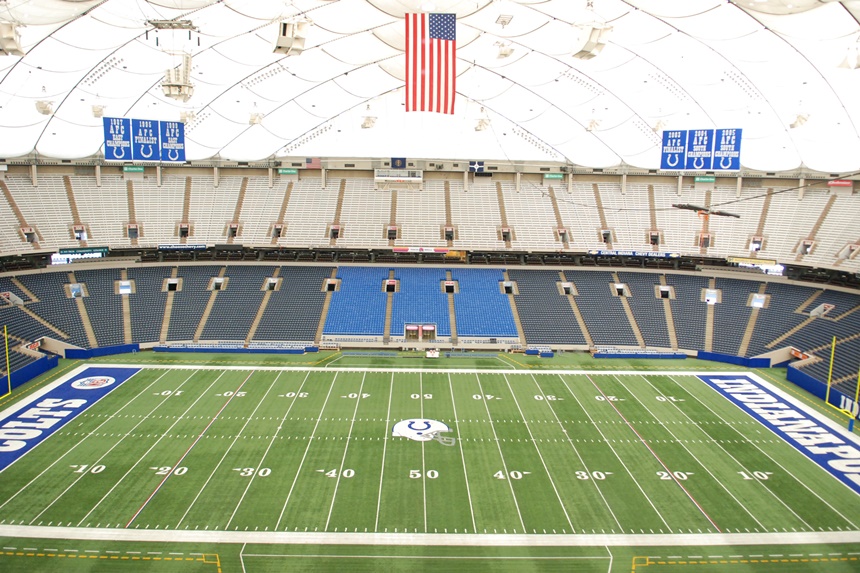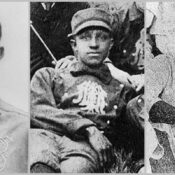More than sixty years ago, the Dodgers made a move that’s still hotly debated. It wasn’t about management or personnel; it was about the location of the team itself. Forsaking Brooklyn for Los Angeles, the Dodgers earned New York’s eternal enmity in 1957 (and were followed by another New York team, the Giants, the following year). Team moves happen for a number of reasons (mostly money), but some have a harsher effect on the locals than others. Here are seven of the most controversial team moves in sports.
1. 1945: What Do You Mean the Rams Are from Cleveland?
The Rams franchise was established in Cleveland in 1936; initially, they were part of the American Football League. The following year, they switched to the competing National Football League, and remained until 1945, when they won the League championship. In 1946, the team moved to Los Angeles, based in part on poor attendance. Even the championship game couldn’t fill more than half the seats. Their departure didn’t leave Cleveland teamless; that same year, they got the Browns (named after Ohio State coach Paul Brown).
Upon moving to L.A., the Rams integrated African-American players as a condition of being able to use the Coliseum. With the Browns also choosing the take African-American players, the Rams helped open the League to a whole new segment of athletes and fans. The move also helped establish pro sports in L.A. and set the tone for many future teams to go west.
2. 1957: The Dodgers Move to L.A.
The Dodgers had been in Brooklyn since 1884, breaking the color barrier along the way when Jackie Robinson joined the club in 1947. After a number of rough years, they made it to the World Series in 1956, only to lose to the Yankees. The Dodgers’ majority owner, Walter O’Malley had encountered a number of obstacles acquiring land around New York for a new stadium, and the city of Los Angeles was simultaneously trying to entice teams to come west. After striking a deal with the city that allowed the franchise to build where they wanted, and to also own the stadium (rather than split it with the city), the Dodgers decided to move. One last roadblock came from the National League itself, which told the team they’d block the move unless another team went west. The Giants had been having their own stadium troubles, and it wasn’t long before both teams split for California. The double departure paved the way for the foundation of the Mets in 1962.
In a 2010 interview with WNYC, Michael Shapiro, author of The Last Good Season: Brooklyn, the Dodgers, and Their Final Pennant Race Together, summed up the impact of the move on the city: “What I came to understand is that what the Dodgers were about was a topic of conversation. That, in many ways, is what really makes cities work and what holds cities together . . .I think you can make a really powerful argument that what Brooklyn lost after the Dodgers left was a topic of conversation.”
3. 1960: Alliteration is More Important Than the Number of Lakes
The Lakers actually started with a move when Ben Berger and Morris Chalfen bought the Detroit Gems in 1947 and brought the team to Minneapolis. After a losing season that included the team surviving their plane crash-landing during a snowstorm, then-owner Bob Short decided to move the team to Los Angeles. They became the NBA’s first west coast team; in that inaugural year, star Elgin Baylor and rookie Jerry West led the team back to the playoffs, though they missed the finals by a basket. One interesting wrinkle about the move is that while the name “Lakers” was completely attributed to Minnesota’s 12,000 lakes, the name was preserved in the move, partially because of the nice alliteration.
4. 1982: The Raiders Begin Their Travels
The Oakland Raiders debuted in 1960 as one of the founding teams of the American Football League (which later merged with the NFL in 1970). In 1982, the Raiders moved to L.A., a change that lasted 12 years. At the outset of the 1995 season, they shifted back to Oakland, partially enticed by the city spending $220 million on stadium renovations. In 2016, billionaire casino magnate Sheldon Adelson put together a proposal for a new domed stadium in Las Vegas that would house both the UNLV team and a potential NFL franchise. Adelson held discussions with Raiders owner Mark Davis, who offered to contribute $500 million to the construction of the stadium if Las Vegas would also contribute. When Nevada legislators came through with $750 million in funding, Davis announced his declaration to move, a motion that was approved by the NFL. The Las Vegas Raiders are scheduled to kick off in 2020.
5. 1984: The Colts Sneak Out
After a lengthy and complicated run of cities, team names, and organization changes that stretched from Dayton, Ohio in 1920 through Brooklyn, Miami, Boston, and Dallas, the franchise officially became the Baltimore Colts in 1953. Over the years, conditions at Memorial Stadium continued to deteriorate, with seating, office space, and other amenities being inadequate for the needs of both the Colts and the Orioles baseball team, which shared the stadium. After years of struggle and attempts to get stadium improvements and funds, the city essentially said that they wouldn’t put in the improvements unless the Colts and Orioles signed long-term leases. The Orioles signed for one year; the Colts didn’t sign at all. The city of Indianapolis had begun construction of the Hoosier Dome, hoping to lure a team to the city; when they pitched Colts owner Robert Irsay, it had the desired effect. As the Maryland legislature attempted to pass a bill to seize the organization, Mayflower moving trucks rolled up to the Colts complex and moved the team equipment and belongings out. By the time that the legislature passed the eminent domain bill to seize the team, the Colts had made their way to Indianapolis. They became the Indianapolis Colts with the onset of the 1984 season, earning the enmity of Baltimore forever; however, they did endorse Baltimore receiving a franchise in the ‘90s, which eventually became the Ravens.
For some former Baltimore Colts, the move came as a savage betrayal. Legendary Colts quarterback and Hall of Famer Johnny Unitas severed all of his ties with the Colts organization after the move. He later threw his support behind the Ravens, recognizing them as the true legacy team. Today, a statue of Unitas stands outside M&T Bank Stadium in Baltimore, a defiant reminder that some team moves are felt deeply by former players.
6. 2012: The Nets Get Out of New Jersey While They’re Young
The Nets began life as a charter team of the ABA, a presumptive rival to the NBA that debuted in 1967. In their first season, they were the New Jersey Americans. The next year, they moved to Long Island and became the New York Nets; they would win two ABA championships under that name. In 1976, the ABA collapsed and four teams merged with the NBA, including the Nets. They went back to the New Jersey in 1977 and became, of course, the New Jersey Nets. That lasted until 2012. As early as 2005, the Nets had announced their intention to move to Brooklyn, but financing, partnership agreements, and lawsuits among various parties spaced out both the move and the building of their eventual home, the Barclays Center. However, all the obstacles were cleared by 2012, and the Nets, like everyone else, moved to Brooklyn.
7. 2014: Ending 12 Years of Hornet/Bobcat/Pelican Drama
Sometimes, you have a fairly straight team move. Other times, you have a very confusing series of circumstances. The Charlotte Hornets debuted in the NBA in 1988 as an expansion team; that lasted until 2002, when the team moved to New Orleans and became the New Orleans Hornets. In 2004, the NBA placed a new expansion team in Charlotte, which became the Charlotte Bobcats.
An unintended side effect of the Hornets’ residency in their new city came in the wake of Hurricane Katrina in 2005, when the storm seriously damaged New Orleans Arena. The team was forced to play in Oklahoma City’s Ford Center for the rest of that season and the next season before they could return home. However, their success in OCK allowed the Seattle SuperSonics to successfully move and become the Oklahoma City Thunder.
By 2013, the Hornets decided that they wanted to rebrand and give themselves a name more closely associated with NOLA. Ultimately, they decided that they would become the New Orleans Pelicans. The following year, the Bobcats took back the now-vacant Hornets to become the Charlotte Hornets once again. Today, the Pelicans, Hornets, and Thunder continue to be active, with the Thunder serving as a perennial playoff contender.
Questions remains if the NBA will return to Seattle. Though the Jet City did recently get the franchise for a new NHL team, NBA commissioner Adam Silver says that while he loves Seattle, getting the city another team isn’t a high priority for the league at the moment. Then again, from what we’ve seen, team moves will always be a possibility.
Featured image: The RCA Dome (originally the Hoosier Dome) was built to lure teams to Indianapolis; it was demolished in 2008 and replaced by Lucas Oil Stadium. (Josh Hallett, Wikimedia Commons via Creative Commons Attribution-Share Alike 2.0 Generic license.).
Become a Saturday Evening Post member and enjoy unlimited access. Subscribe now



